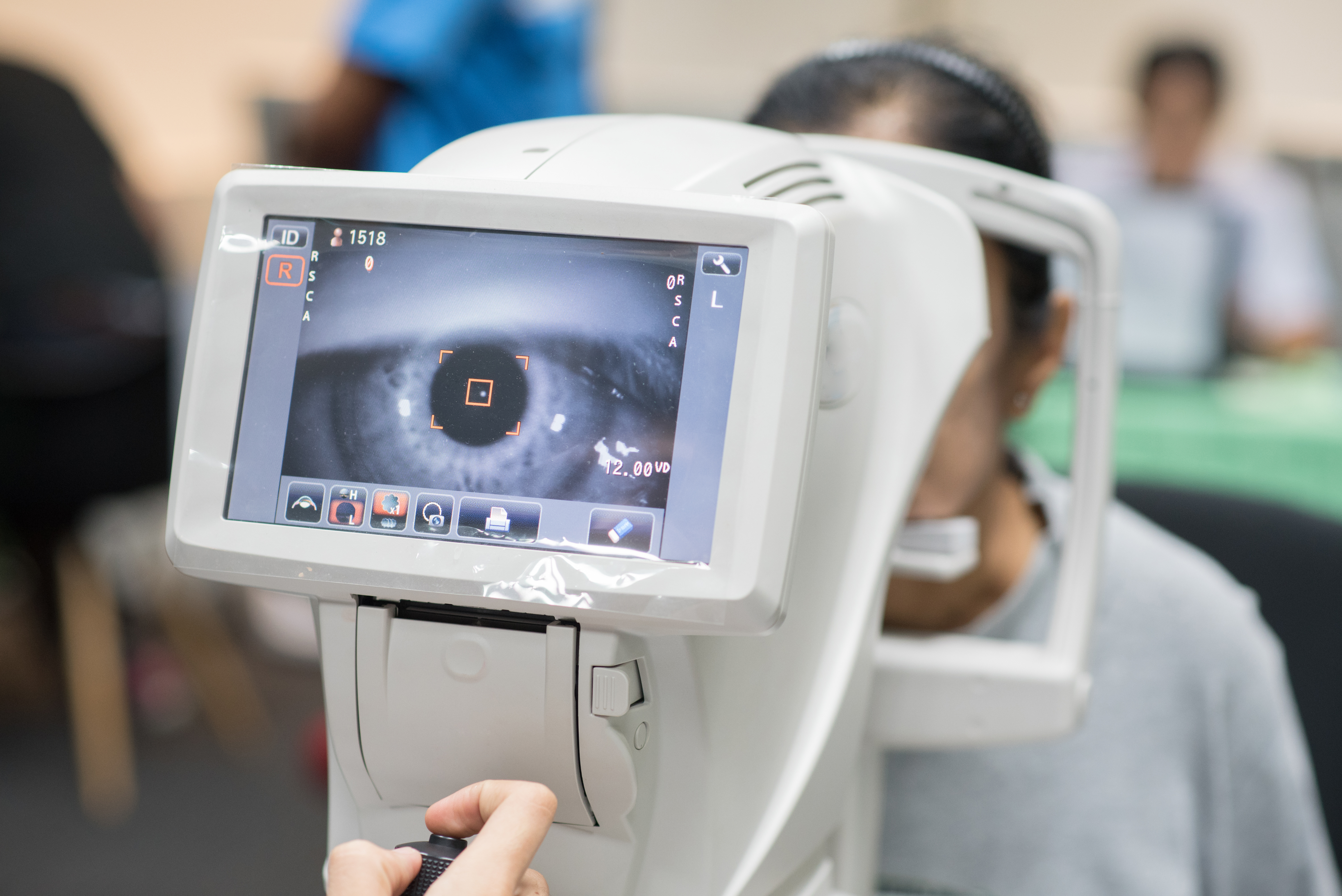
Macular disease is the leading cause of blindness in Australia.
- 91% of Australians are unsure and unaware of the function of the macula.[1]
- There are 8 million Australians who are at risk of macular degeneration, it accounts for 90% of legal blindness in Australia.
- Despite it being the leading cause of blindness, most of us don’t know about the function of the macula, what happens when it degenerates and how to prevent it.
According to ProVision optometrist and ProVision Professional Services Committee member, Janine Hobson, “we haven’t perhaps taught enough prevention, and I think, instead of being proactive, we are reactive. The issue here is, once you are reactive, it is much more difficult to solve a problem, whereas if you are proactive, you can go about preventing eye diseases such as this.”
We asked Janine, who is owner and optometrist at Young Eyes in NSW and has been a practising optometrist for over 30 years about this leading cause of blindness and how to prevent it.
What is the macula?
The macula is part of the retina at the back of the eye. It is only about 5mm across but is responsible for all of our central vision, and for sharp, clear, straight-ahead vision, most of our colour vision and the fine detail of what we see. The macula has a very high concentration of photoreceptor cells that detect light and send signals to the brain, which interprets them as images. The rest of the retina processes our peripheral vision.
Macular disease causes loss of central vision.
What causes macular degeneration?
We don’t know the cause of age-related macular degeneration, but we do know that there are certain risk factors for the development of age-related macular degeneration. Research indicates it may be related to a combination of heredity and environmental factors, including smoking and diet.
What is the difference between wet and dry macular degeneration?
- Dry (atrophic): caused by the gradual atrophy (loss) of retinal cells. It may lead to a gradual loss of central vision. Currently there is no treatment available for the dry form. Research is being conducted to develop treatments.
- Wet (neovascular): caused by the formation of fragile blood vessels which leak fluid and blood within and under the retina. It often leads to a rapid loss of central vision. Loss of vision in one eye may go unnoticed if vision in the fellow eye is good. Regular vision testing of each eye in turn is recommended.
People with dry macular degeneration don’t have these abnormal or fragile blood vessels yet, but they are at an increased risk for developing the vessels at some point.
Can you get macular degeneration in one eye or does it always occur in both?
It is possible to develop it in only one eye. However, as the disease progresses both eyes may become affected. If an individual has macular degeneration in one eye, he or she is more likely to develop it in the other eye than someone who does not.
The biggest issue with macular degeneration is that it generally doesn’t have symptoms in the early stages for most people, especially, if the problem in the back of their eye is their non-dominant eye. Your non-dominant eye is like your non-dominant hand, if you are right-handed, that’s your dominant hand. If you hurt your left hand it never affects you as much, because everything you do is right-handed. This is similar to what happens in your vision. If the cells start to die in the back of the eye, which is what causes the problem, then you get little bits of the retina missing, and when that retina starts to miss, if it is not missing in the dominant eye then patients don’t actually notice it.
This is the reason it is really important for patients, especially once over 65, but definitely once they are over 50, to visit an optometrist, so that we can find these defects early, and before they notice that they have a problem, because by this time, any loss of vision could be irreversible.
The biggest issue is, if patients get macular in their better or more dominant eye, that loss of independence for older people is what creates huge problems. That is the issue that I always try to emphasise. That regular eye examinations will help keep you independent, keep you living at home, keep you doing what you want to do, and likely stop you having to lose your driver’s license.
Family history and age are the main risk factors, are there any others?
Factors that may increase your risk of macular degeneration include:
- Age. This disease is most common in people over 50.
- Family history. This disease has a hereditary component. Researchers have identified several genes related to developing the condition.
- Race. Macular degeneration is more common in white people.
- Smoking. Smoking cigarettes or being regularly exposed to smoke significantly increases your risk of macular degeneration.
- Obesity. Research indicates that being obese increases the chance that early or intermediate macular degeneration will progress to a more severe form of the disease.
- Cardiovascular disease. If you have diseases that affect your heart and blood vessels, you may be at higher risk of macular degeneration.
50% of patients that have macula also have a family member that has been affected with macula degeneration.
We try and give all our patients the Amsler Grid with the little magnet on the back to attach to the fridge and encourage them as check each eye daily.
What is an Amsler Grid?
You can take care of your vision and the progression of macular degeneration day-to-day in your home and keep a close watch on any changes. To discover any changes to your vision as early as possible, your optometrist will probably have you test your own vision on a regular schedule using a small, hand-held Amsler grid.
You should monitor your vision at home, and it’s important to do that one eye at a time, because if one eye develops wet macular degeneration, it might not be so noticeable as the other eye is compensating.
We administer Amsler grids to all at-risk patients. We advise them to cover one eye at a time and then look into the Amsler grid. There’s a little dot in the centre of the grid that you can look at and then make sure that you can see all of the lines on the graph paper—that they’re not wavy or missing. If our patients notice changes, they are encouraged to advise their optometrist immediately.
What are the signs and symptoms of macular degeneration?
That is the problem, there are not really any early symptoms, especially if the non-dominant eye is involved. Not until the eye is covered one day will the patient notice the loss of central vision and definitions.
Some people with the intermediate stage may notice changes to their central vision.
Currently there is no treatment available for the early and intermediate stages. Research is being conducted to develop treatments.
Most important is the use of the advanced technology of the retinal imaging such as the photography and especially the newer wide field cameras, as this will highlight any changes quickly.
And of course, the OCT that really defines any central macula changes taking place. We can quickly compare to previous images or if it is a new diagnosis, can refer to the ophthalmologist for treatment immediately.
Is macular degeneration an inevitable part of ageing?
No. Many people don’t lose vision, especially if they maintain a healthy lifestyle. It’s been shown that people who eat a healthy diet, don’t smoke, and exercise can decrease their risk of vision loss—and by a healthy diet, I mean lots of fruits and vegetables and fish, and really trying to cut back on refined foods, highly processed foods, foods with a lot of sugar, meats, and animal products.
How is the condition diagnosed?
All optometrists check eye health at every comprehensive examination, looking for the three most common eye diseases cataracts, glaucoma and macular degeneration as well as other less common problems.
Although there is no cure, are there treatments available for macular degeneration?
There is currently no treatment for dry macular degeneration but treatments are available for wet macular degeneration that are aimed at maintaining the vision for as long as possible.
For the wet form of the disease, some common treatments that can help control the abnormal blood vessel growth and bleeding in the macula include injections, laser surgery, and photodynamic therapy. Some eye doctors recommend vitamin supplements to reduce the progression of dry macular degeneration, – particularly zinc, Vitamins C, E and beta carotene.
For long term healthy eyesight, it is vital to have a comprehensive eye exam every 2-3 years. If over 65 years of age, annual exams are recommended. If there are other risk factors, more regular checks may be required and your optometrist will advise you on how often you should attend.
[1] ‘Awareness of macular disease’, study conducted by YouGov Galaxy, commissioned by Macular Disease Foundation Australia –read more via below link
Many people in our community are at risk of developing macular disease but just don’t know it.
Janine Hobson is the owner and Optometrist at Young Eyes. She has been practising for over 30 years and has completed extra qualifications in therapeutics and additionally behavioural / developmental optometry including the use of colour for the treatment of learning related issues and rehabilitation.
Janine also volunteers her time to the Sumba Eye Program, annually visiting to provide eyecare to the local people of Sumba, Indonesia who cannot normally access these services.


